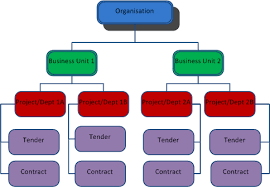What Are Business Units

In What Are Business Units the business world, it’s quite common to hear the term “business unit” tossed around. But what exactly is a business unit and how can it help a company optimize its operations? A business unit can be defined as a distinct subdivision within a larger organization. It is charged with producing goods or services using their own resources and processes that are tailored to meet particular customer needs. In this blog post, we will take an in-depth look at what business units are, their roles in organizations, and how they impact business performance. We’ll also discuss the various types of business units, so you can have a better understanding of how they operate and how they may benefit your company.
What is a business unit?
A business unit is a division of a company that is responsible for its own profit and loss. Each business unit has its own management team and is typically organized around a product or service. Business units are often distinguished from one another by their geographic location, market, or type of customer.
The term is used in many different ways, but generally refers to a division of a company that is responsible for its own profit and loss. Business units can be distinguished from one another by their geographic location, market, or type of customer.
are typically organized around a product or service, and have their own management team. The size of business units can vary greatly, from small divisions within large companies to stand-alone businesses. Whatever their size, all business units share the goal of generating profits for their parent company.
The different types of business units
There are three primary types of product, geography, and function.
Product are organized around specific products or product lines. The primary focus of these business units is to develop and market products that meet the needs of customers in a particular market segment.
Geographic business units are organized around geographic regions. The primary focus of these business units is to develop and market products that meet the needs of customers in a particular geographic area.
Functional business units are organized around specific functions such as marketing, finance, or human resources. The primary focus of these business units is to provide support for the overall operation of the company.
The advantages of having a business unit
There are many advantages of having a .provide a way to measure and track progress and performance. They also help to ensure that each area of the company is focusing on its own goals and objectives. Additionally, business units can help to improve communication and coordination between different departments within the company. Finally, business units can provide a way to motivate employees by offering incentives for meeting or exceeding targets.
How to set up a business unit
There are a few key steps to setting up a :
1. Define the purpose and scope of the .
2. Create a structure for the business unit.
3. Assign roles and responsibilities within the .
4. Set up systems and processes for the .
5. Launch the business unit and monitor its performance.
Let’s take a closer look at each of these steps:
1. Define the purpose and scope of the business unit: The first step is to clearly define what the purpose and scope of the business unit will be. What problem is it solving? What products or services will it offer? Who is it targeting? Once you have answers to these questions, you can start to put together a plan for the business unit.
2. Create a structure for the business unit: The next step is to create a organizational structure for the . This will involve deciding on things like how many employees there will be, what departments they will work in, and who will be in charge of each department.
3. Assign roles and responsibilities within the business unit: Once you have created a structure for the business unit, you need to assign roles and responsibilities within it. Who will be responsible for what tasks? Make sure that everyone understands their role and what is expected of them.
4 Set up systems and processes for the :
Conclusion
are an important concept within business management, providing structure and division of labor for complex tasks. By understanding the different types of available to you, you can make informed decisions about how to best set up your own organization in order to maximize efficiency, profitability and customer satisfaction. Whether you choose a functional unit, product/service-based unit or geographic area-based unit will depend on the specific needs of your industry and company size. Ultimately though, having a strong organizational structure is essential for sustained growth and success in any business venture.





